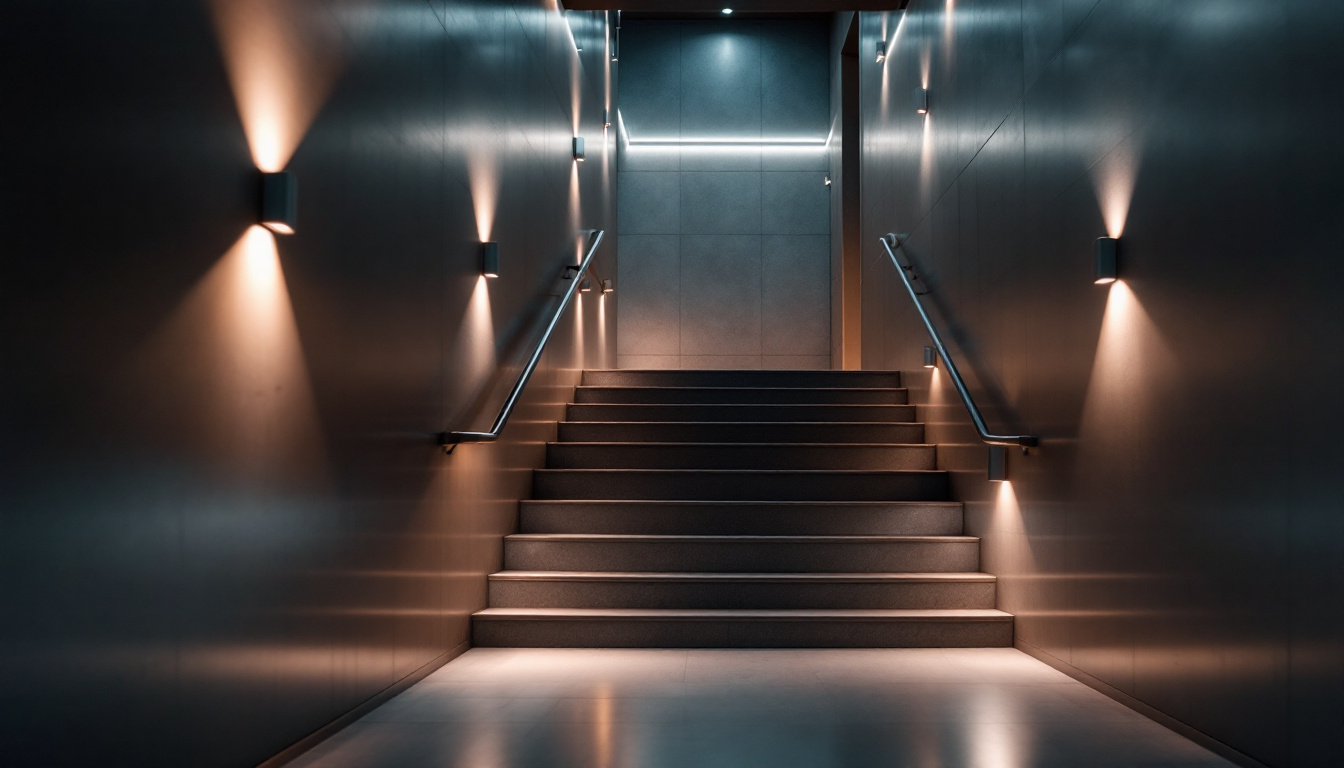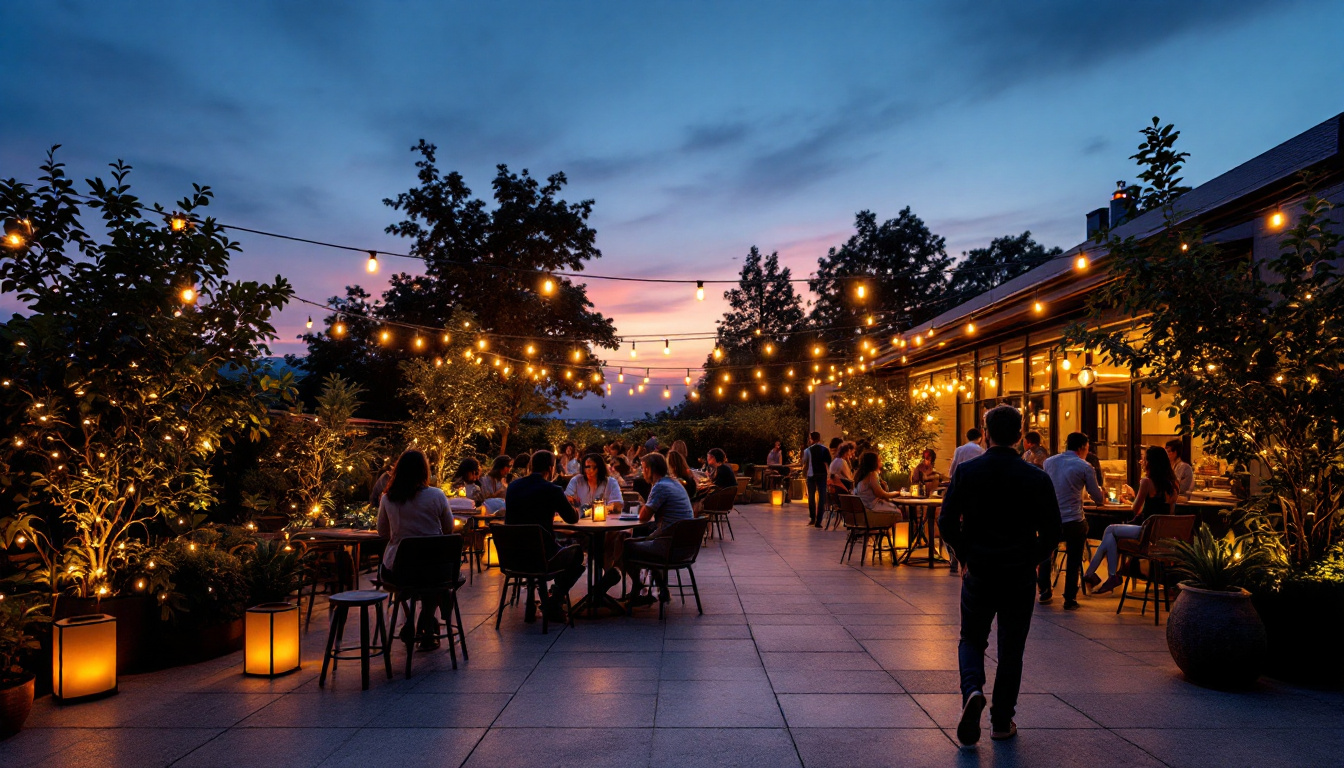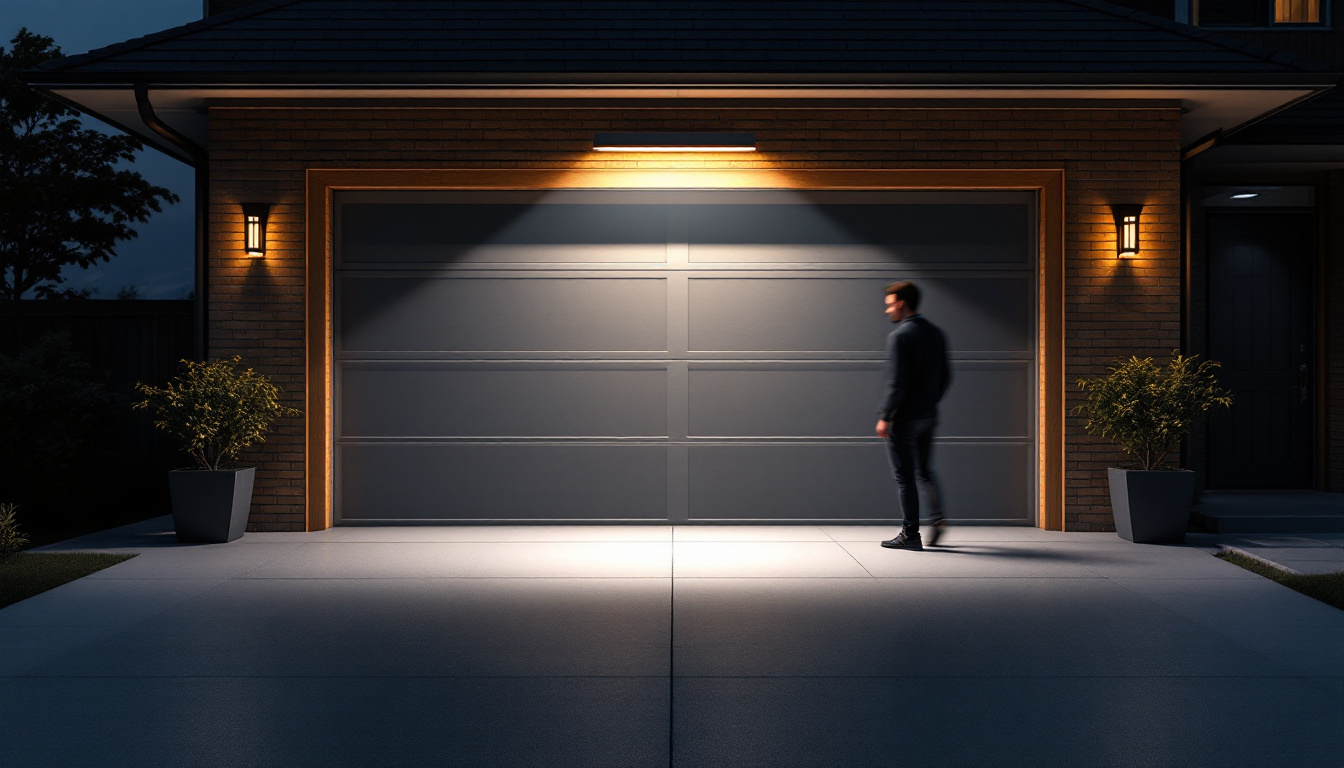
Stairwells are often overlooked areas in both residential and commercial buildings, yet they serve a crucial role in ensuring safety and accessibility. For lighting contractors, understanding the best practices for stairwell lighting is essential to create well-lit, inviting, and safe environments. This article explores effective strategies and considerations for lighting contractors involved in stairwell projects.
Effective stairwell lighting is not just about visibility; it also contributes to the overall aesthetic and safety of a building. Poorly lit stairwells can lead to accidents, while well-designed lighting can enhance the experience of using these spaces. The choice of lighting fixtures, their placement, and the color temperature can all play significant roles in creating an inviting environment that encourages safe navigation.
Safety is paramount in stairwell design. Adequate lighting helps prevent slips, trips, and falls, which are common hazards in poorly lit areas. Proper illumination allows individuals to clearly see steps, handrails, and potential obstacles. Lighting contractors must ensure that the lighting design meets local safety codes and guidelines. Additionally, the use of motion sensors can further enhance safety by activating lights when someone approaches, ensuring that the stairwell is always well-lit when in use. This proactive approach not only improves safety but also contributes to energy efficiency by reducing unnecessary energy consumption during off-peak hours.
Beyond safety, well-placed lighting can enhance the visual appeal of a stairwell. A thoughtfully designed lighting scheme can highlight architectural features and create a welcoming atmosphere. This is particularly important in commercial settings where first impressions matter. Lighting contractors should consider how different lighting techniques can be used to complement the design of the stairwell. For instance, using wall sconces can add a touch of elegance while providing indirect lighting that softens the overall ambiance. Furthermore, incorporating LED strip lights along the edges of steps can not only improve visibility but also add a modern flair to the design, making the stairwell a focal point rather than just a passageway.
In today’s environmentally conscious world, energy efficiency in stairwell lighting is more important than ever. The integration of energy-efficient lighting solutions, such as LED fixtures, can significantly reduce electricity consumption while maintaining optimal illumination levels. Furthermore, the use of smart lighting controls allows for adjustments based on occupancy and natural light availability, ensuring that energy is used wisely. This not only lowers utility costs but also aligns with sustainability goals, making buildings more attractive to eco-conscious tenants and visitors.
The psychological effects of lighting should not be overlooked in stairwell design. Studies have shown that well-lit environments can positively influence mood and reduce anxiety. In spaces where individuals may feel vulnerable, such as stairwells, the right lighting can instill a sense of safety and comfort. By incorporating warm color temperatures and soft lighting techniques, designers can create an inviting atmosphere that encourages people to use the stairs rather than elevators, promoting a healthier lifestyle. Additionally, the strategic use of lighting can guide individuals through the space, making navigation intuitive and stress-free.
The choice of lighting fixtures plays a significant role in the effectiveness of stairwell lighting. Various types of fixtures can be employed, each with its own advantages and considerations. Proper lighting is crucial not only for aesthetics but also for safety, as well-lit stairwells can help prevent accidents and ensure that individuals can navigate the space comfortably.
Common types of fixtures used in stairwell lighting include recessed lights, wall sconces, and pendant lights. Recessed lights are often favored for their sleek appearance and ability to provide even illumination without taking up space. They can be strategically placed to highlight the stair treads and landings, creating a seamless flow of light throughout the area. Wall sconces can add character and style, available in a variety of designs that complement the overall decor of the home or building. They can also be positioned at eye level, providing both functional lighting and an artistic element. Pendant lights, on the other hand, can create a focal point in larger stairwells, drawing the eye upward and enhancing the architectural features of the space. The height and design of pendant fixtures can significantly influence the ambiance, making them a versatile choice for various design schemes.
When selecting bulbs, lighting contractors should consider the benefits of LED technology over traditional incandescent or fluorescent options. LEDs are energy-efficient, have a longer lifespan, and offer a variety of color temperatures. These factors not only reduce energy costs but also minimize maintenance needs, making them an ideal choice for stairwell applications. Additionally, LEDs emit less heat, which can be particularly beneficial in enclosed spaces like stairwells, reducing the risk of heat-related issues. Furthermore, the ability to dim LED lights allows for customizable lighting levels, making it possible to adjust the brightness according to the time of day or specific needs. This flexibility can enhance the overall experience in the stairwell, providing a warm and inviting atmosphere during evening hours while ensuring adequate visibility during the day.
Determining the appropriate illumination levels and distribution is vital for effective stairwell lighting. The goal is to create a uniform light distribution that minimizes shadows and dark spots.
According to various lighting standards, the recommended illumination level for stairwells typically ranges from 100 to 200 lux. This level ensures that individuals can navigate the space safely. Contractors should measure light levels at different points in the stairwell to ensure compliance with these recommendations.
Uniform lighting is essential to avoid creating areas of high contrast that can confuse or disorient users. Lighting contractors should aim for a uniformity ratio of at least 0.4, meaning the average light level should be at least 40% of the minimum light level in the stairwell. This can be achieved through careful fixture placement and the use of diffusers to soften harsh shadows.
Modern lighting solutions often incorporate smart controls and automation, which can enhance the functionality of stairwell lighting. By integrating these technologies, contractors can provide added convenience and efficiency.
Motion sensors are an excellent addition to stairwell lighting, as they can automatically turn lights on and off based on occupancy. This not only conserves energy but also ensures that lights are only active when needed. Contractors should consider the placement of sensors to avoid false triggers while ensuring adequate coverage.
Dimming capabilities can also enhance the user experience in stairwells. Adjustable lighting levels allow for softer illumination during off-peak hours, creating a more inviting atmosphere. Lighting contractors should explore compatible dimming systems that work seamlessly with the chosen fixtures and bulbs.
Stairwell lighting design may vary depending on the type of building and its intended use. Understanding these differences is crucial for lighting contractors.
In residential settings, stairwells often serve as transitional spaces. Warm, inviting lighting can create a cozy atmosphere. Contractors should consider using fixtures that complement the home’s interior design while ensuring adequate illumination. Additionally, incorporating decorative elements such as wall art or architectural features can enhance the overall aesthetic.
Commercial stairwells, on the other hand, may require a more functional approach. Bright, even lighting is essential to accommodate higher foot traffic and ensure safety. Contractors should focus on durability and ease of maintenance when selecting fixtures for these environments. Additionally, incorporating branding elements through lighting can enhance the overall identity of the business.
Lighting contractors must be well-versed in local building codes and standards related to stairwell lighting. Compliance ensures that the lighting design meets safety regulations and provides a secure environment for users.
Each jurisdiction may have specific requirements regarding stairwell lighting, including minimum illumination levels, fixture placement, and emergency lighting provisions. Contractors should familiarize themselves with these regulations to avoid potential compliance issues. Consulting with local authorities or industry associations can provide valuable insights.
Emergency lighting is a critical aspect of stairwell design, especially in commercial buildings. Lighting contractors must ensure that emergency lights are installed in accordance with local codes, providing adequate illumination in the event of a power failure. This includes maintaining backup power sources and ensuring that emergency lighting is regularly tested and maintained.
Once the stairwell lighting system is installed, ongoing maintenance is essential to ensure its longevity and effectiveness. Lighting contractors should provide clients with guidance on proper care and maintenance practices.
Regular inspections of lighting fixtures and systems can help identify potential issues before they become significant problems. Contractors should recommend a maintenance schedule that includes checking for burned-out bulbs, cleaning fixtures, and ensuring that sensors and controls are functioning correctly.
As technology continues to evolve, lighting contractors should stay informed about new advancements that can enhance stairwell lighting. Upgrading to more efficient fixtures or incorporating smart technologies can improve energy efficiency and user experience. Contractors should educate clients on the benefits of these upgrades and provide options for future enhancements.
Stairwell lighting is a critical aspect of building design that requires careful consideration and expertise. By following best practices, lighting contractors can create safe, functional, and aesthetically pleasing stairwell environments. From understanding the importance of safety and aesthetics to selecting the right fixtures and complying with regulations, contractors play a vital role in the success of stairwell lighting projects. By staying informed and embracing new technologies, lighting professionals can continue to elevate the standards of stairwell lighting, ensuring that these spaces are both safe and inviting for all users.
Ready to take your stairwell lighting projects to the next level? At LumenWholesale, we provide lighting contractors with the highest quality, spec-grade lighting products at prices that can’t be beaten. Say goodbye to inflated markups and hello to a vast selection of reliable lighting solutions that meet rigorous industry standards. With free shipping on bulk orders, you can trust that you’re getting the best value without any hidden costs. Elevate your lighting game and create spaces that are safe, inviting, and beautifully lit. Discover wholesale lighting at the best value today and make LumenWholesale your go-to for premium lighting supplies.

Discover the ultimate lighting contractor checklist for 6 inch can light covers.

Illuminate your home’s exterior with strategic outdoor lighting.

Discover how outdoor patio LED lights are transforming the lighting industry with their energy efficiency, versatility, and aesthetic appeal.

Discover the essential role garage motion lights play in modern lighting solutions.